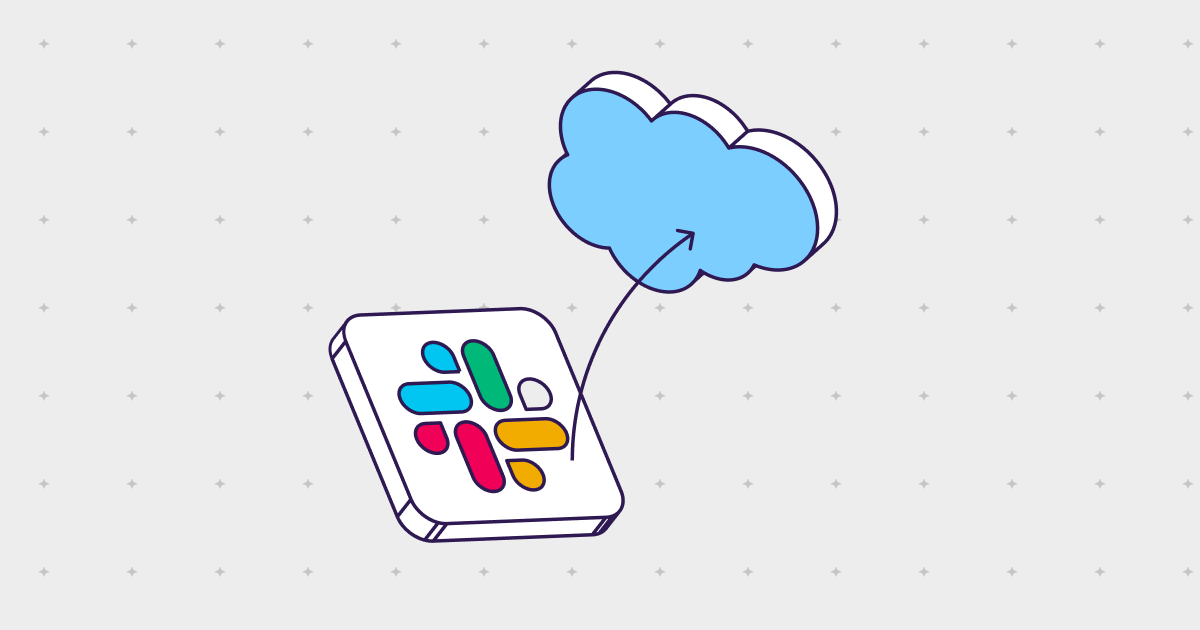
Sales forecasting is how businesses attempt to predict the future. A methodical, effective forecast provides invaluable insights to inform your business decisions. Whether you're new to sales forecasting or seeking to refine your approach, this guide will introduce you to essential methods and tools to enhance your B2B forecasting efforts.
What is sales forecasting?
At its core, a sales forecast is a projection of the sales a company expects to achieve within a specified period. It can be based on historical data, market trends, and various sales forecasting methods and models.
Why is sales forecasting important?
Your organization’s sales forecast is vital to:
- Allocate resources efficiently
- Identify potential challenges and opportunities
- Form the foundation for business strategies
- Drive budgeting and financial planning
Methods and Models of Sales Forecasting
There are a variety of sales forecasting models and methods. The choice depends on the nature of your business, available data, and desired outcomes. Here are some of the most common methods:
Historical Data Forecasting
This method leverages past sales data to predict future sales. The assumption is that history will, to some extent, repeat itself.
Pros: Simple and straightforward, especially if you have consistent and reliable historical data.
Cons: Doesn't account for sudden market changes or anomalies. Might not be suitable for new products or markets without historical data.
Ideal for: Stable industries or businesses with consistent sales patterns.
Top Down Forecast
This begins with a general market or industry prediction. After identifying the total market potential, businesses estimate the percentage they can capture.
Pros: Provides a broad overview, which can be helpful for startups or entering a new market.
Cons: Can be overly optimistic if businesses overestimate their market share. Might not consider ground-level challenges.
Ideal for: New businesses or products, or when entering new markets.
Predictive Sales Analysis
Utilizes big data, machine learning, or AI to analyze vast amounts of data and identify patterns, making predictions based on these patterns.
Pros: Can be more accurate due to the breadth of data and variables considered. Adapts to changing conditions and data inputs.
Cons: Requires sophisticated technology and expertise. Might be overkill for small businesses with limited data.
Ideal for: Larger enterprises or industries where multiple variables influence sales.
Sales Potential Analysis
This evaluates the maximum sales opportunities available in a given market. By assessing the ceiling of potential sales, businesses can set realistic targets.
Pros: Keeps forecasts grounded in reality. Helps in identifying market saturation points.
Cons: Determining true sales potential can be challenging and may require market research.
Ideal for: Businesses looking to expand or assess if they've saturated their current market.
While each method has its merits, the best approach often involves a combination of multiple methods. Factors to consider when you are choosing a forecasting method include the type of product or service, the maturity of the business, the stability of the market, available data, and the tools in your company’s tech stack.
In any case, the aim of sales forecasting isn't necessarily to pinpoint an exact number but to give businesses a clear direction and actionable insights. Whether you're basing predictions on historical patterns or cutting-edge predictive analytics, the value lies in the strategic decisions that these forecasts empower you to make.
Sales Forecasting Examples
To further understand, consider these sales forecasting examples:
Historical Data Forecasting Example: B2B SaaS Company
The past 5 years of sales data indicates that license renewals have grown by an average of 15% annually. By filtering and analyzing opportunities with close dates set for the next year, the sales team predicts a 15% increase over the current year's figures. Using reports and dashboards, the team should also account for any anomalies, like a one-time bulk purchase by a large corporation in the previous year.
Top-Down Forecasting Example: Cloud Services Provider
The company is introducing a new cloud solution tailored for SMEs. Research indicates a total market worth of $10 billion for SME cloud solutions. The revenue operations team tracks the company’s historical market capture rate for new products, which stands at 0.5% for the first year. The potential revenue from the new product is forecasted at $50 million ($10 billion x 0.5%). Analytics can provide insights into how other products were adopted over time, helping refine this top-down estimate.
Predictive Sales Analysis Example: Financial Services
The firm wants to promote a new investment package to its clientele.The sales team analyzes data from similar past campaigns, current economic trends, client demographics, and interaction histories. Predictive analytics suggest that they are likely to secure investments from 10% of their existing clientele for the new package. For predictive analytics tools to be effective, their sales database must be clean and current, as AI-driven predictions are heavily dependent on the quality and recency of data.
Sales Potential Analysis Example: Medical Equipment Manufacturer
The manufacturer has developed a new type of diagnostic machine for hospitals. The revenue operations team reviews the number of hospitals they've historically sold to, as well as hospitals in their pipeline that have shown interest in innovative diagnostic solutions. They determine that, of the 1,000 hospitals they've engaged with, 30% might be interested in the new diagnostic machine, indicating a sales potential of 300 units. The team can further segment potential buyers based on hospital size, budget, and past purchase behaviors.
Sales Forecast Formulas
There are various sales forecasting formulas that can be used depending on the specific information available and the nature of the business. Here are some example sales forecasting formulas:
Weighted Pipeline Forecasting
This method considers the number of sales opportunities, the average value of each opportunity, and the likelihood of closing each sale.
Formula: Forecast = (Number of Opportunities x Value of Each Opportunity x Probability of Closing)
Moving Average Forecasting
This formula averages sales over a specific number of months (n) to predict the next month's sales. Useful when sales numbers fluctuate but don’t have a clear trend.
Formula: Forecast = (Sales of Month 1 + Sales of Month 2 + ... + Sales of Month n) / n
Exponential Smoothing
This approach gives more weight to recent sales data. The smoothing factor, usually between 0 and 1, determines the weight.
Formula: Forecast = (Last Actual Sales x Smoothing Factor) + (Last Forecast x (1 - Smoothing Factor))
Linear Regression Forecasting
This formula predicts sales based on a trend over time. The 'a' is the y-intercept, and 'b' represents the slope of the line. This method is useful when sales data displays a consistent upward or downward trend.
Formula: Forecast = a + b x Time Period
Decomposition of Time Series
This approach breaks down sales data into trend, seasonal, and random factors. By analyzing each separately, you can forecast sales more accurately for businesses with pronounced seasonal fluctuations.
Formula: Forecast = (Trend Component + Seasonal Component) + Random Component
Growth Rate Forecasting
This simple formula multiplies the sales of the last period by a projected growth rate.
Formula: Forecast = Last Period Sales x (1 + Growth Rate)
Market Growth Rate Adjustment
This approach adjusts the baseline sales forecast (could be based on historical data) with the projected industry growth rate.
Formula: Forecast = (Baseline Sales Forecast) x (1 + Industry Growth Rate)
While formulas provide a structured way to calculate forecasts, it's essential to approach them with a critical mindset. No single formula can capture all the intricacies of a market, and external factors can always introduce variability. Using a blend of quantitative formulas and qualitative insights will usually yield the most accurate forecasts.
Tips for Effective Sales Forecasting
Effective sales forecasting is a critical element in driving a business forward, as it impacts budgeting, inventory management, marketing strategies, and more. Let's dive deeper into the tips for ensuring that your sales forecasting is as accurate and beneficial as possible:
Stay Updated
The business environment is dynamic. External factors like market trends, economic shifts, and competitor actions can significantly impact sales. Regularly review industry news, attend webinars, and participate in trade conferences. Schedule monthly or quarterly reviews of your forecasts to adjust them based on the latest information.
Utilize Technology
Technological advancements, especially in AI and machine learning, can offer more nuanced and adaptive forecasting models. Invest in sales forecasting software that aligns with your business size and needs. Many tools integrate with CRM systems, automatically updating forecasts based on real-time data.
Consistency
Keeping the forecasting process consistent ensures that data remains comparable across periods, revealing trends and deviations. Set specific guidelines and standards for how forecasts are to be conducted. Whether you're looking at weekly, monthly, or yearly forecasts, use the same metrics, time frames, and methods for each period.
Regular Review
Comparing forecasted sales against actual sales can reveal discrepancies, helping refine future forecasting efforts. Set up a post-mortem review at the end of each forecasting period. Identify areas where predictions were off-mark, analyze why, and adjust your models or data sources accordingly.
Collaboration
Sales forecasts shouldn't be created in a vacuum. Input from sales, marketing, customer support, and even production can provide different perspectives that refine the forecast. Organize regular cross-departmental meetings to discuss the forecast. Encourage open communication and feedback loops between teams. This collaboration can provide insights into front-line challenges or opportunities that might not be evident in raw data.
Factor in External Variables
Apart from internal data, many external factors, such as economic conditions, political stability, or even weather patterns, can impact sales. Incorporate external data sources into your forecasting model. This could be industry reports, economic indicators, or even social sentiment analysis, depending on your business.
Scenario Planning
It's beneficial to forecast multiple scenarios, especially in volatile markets. This approach prepares businesses for best-case, average, and worst-case scenarios. After creating your primary sales forecast, adjust some of the variables to see how changes might affect outcomes. This could be changes in market demand, alterations in marketing spend, or new competitor entries.
Continuous Learning and Training
As with any skill, the accuracy and effectiveness of sales forecasting can improve with ongoing learning and training. Invest in training programs for your team, focusing on the latest forecasting techniques, tools, and best practices. Encourage a culture of continuous learning.
Remember, the goal isn't just to predict the future but to use those predictions to inform strategy and decision-making.
How to Create a Sales Forecast: Step-by-Step
Creating a sales forecast requires a systematic approach to ensure accuracy and reliability. Here's a step-by-step guide to walk you through the process:
What you need to get started:
- Current sales pipeline
- Historical view + analysis
- Lead scoring if used
- Market research/competitive analysis
Define the time period
Determine the time frame for which you want to forecast sales. This could be monthly, quarterly, or annually. The chosen period should align with your business's planning cycle.
Understand Your Sales Goals
Establish clear sales targets. Are you aiming for market penetration, product launch success, or just maintaining current sales levels?
Objectives can vary from one company to another, such as targeting a specific revenue, acquiring new clients, selling a set number of products, or achieving consistent customer renewals.
At an early-stage growth company, or an established company moving into new geography, your top priority might be closing new clients to establish brand credibility and gain insight into a new market, regardless of size or monthly or annually recurring revenue. At an established B2B company with diverse product lines, your top priority might be closing deals for a particular product category or a specific market.
Annual Recurring Revenue (ARR)
ARR is a common metric in SaaS and any long-term subscription business. It reflects all of the revenue a company expects to take in during the fiscal year, including both new clients and upsells. If a company commits to a three-year enterprise package for $1.2 million, the yearly revenue from this deal would be $400,000.
New Clients
New bookings are crucial for a growing business. Drawing in these first-time customers can help build a loyal client base, generate referrals and testimonials, and establish credibility in the market. In a business where new bookings are the key objective, the size of the contract may be less important to the sales forecast.
Product Sales Quantity and Variety
The number of products sold across different solutions or verticals is a valuable metric in determining strategic decisions. For example, a SaaS fintech that serves both small business and mid-market customers are likely to see that ARR per customer is lower for their SMB product than for their mid-market product. This information informs not only the sales forecast across segments, but also product roadmaps, marketing campaigns, and R&D investment.
Segment Your Sales
Based on your goals, break down your sales forecast by product, region, sales team, or any other relevant category. This granularity will allow for more detailed analysis and precision.
Review Historical Sales Data
Analyze past sales records to understand patterns, growth rates, and seasonality. Adjust for any anomalies like one-off bulk purchases or events that won't recur. Companies that base their forecasts on black swan events, like a competitor going out of business, are likely to miss targets or poorly allocate resources.
Consider Market Conditions
Research current market trends, potential economic shifts, and industry reports. Assess how external factors, like regulatory changes or global events, might impact your sales.
Analyze Your Sales Funnel
Use your CRM to assess the current state of leads and prospects. By evaluating the conversion rates at each stage of your sales funnel, you can project how many leads will become paying customers.
Account for Seasonality
If your business has predictable fluctuations during the year (e.g., retail businesses often see a spike during holiday seasons; corporations may evaluate their financial tech stack in the 4th quarter), adjust your forecast accordingly.
Determine Sales Forecast Maturity
Evaluate how sophisticated your forecasting methods are. Effective CRM reporting and automations serve as powerful tools for a RevOps teams, significantly streamlining the sales forecasting process. Enhanced CRM reporting can provide real-time insights into sales activities, customer behaviors, and deal progressions, eliminating the need for manual data extraction and reducing potential errors. Meanwhile, automations can further expedite routine tasks such as data entry, lead assignment, and creating new opportunities. By automating these processes, your RevOps team can focus more on analyzing trends, predicting outcomes, and strategizing for the future. Optimized CRM functionalities free up valuable time, enabling the team to produce more accurate and timely sales forecasts, thereby driving informed business decisions.
Review and Adjust Regularly
Continuously compare your forecasted figures with actual sales to identify any discrepancies, data issues, or leaks in your funnel. Adjust your forecasting methods based on these learnings to improve accuracy over time and keep your team on target.
Conclusion
Creating an accurate sales forecast is a blend of art and science. With the variety of sales forecasting methods, from top-down forecasts to the use of historical data, businesses have multiple avenues to project their future sales.
Whether you are leveraging a sales projection template or a sophisticated revenue forecast model, remember that the primary objective is to provide a roadmap for your business's growth. Stay flexible, learn from past sales forecast examples, and adjust as you gather more data and insights.
Remember, an accurate forecast isn't just about predicting the future—it's about shaping it. Armed with insights from your forecasting efforts, you can proactively address challenges, seize opportunities, and steer the business towards continued success.






